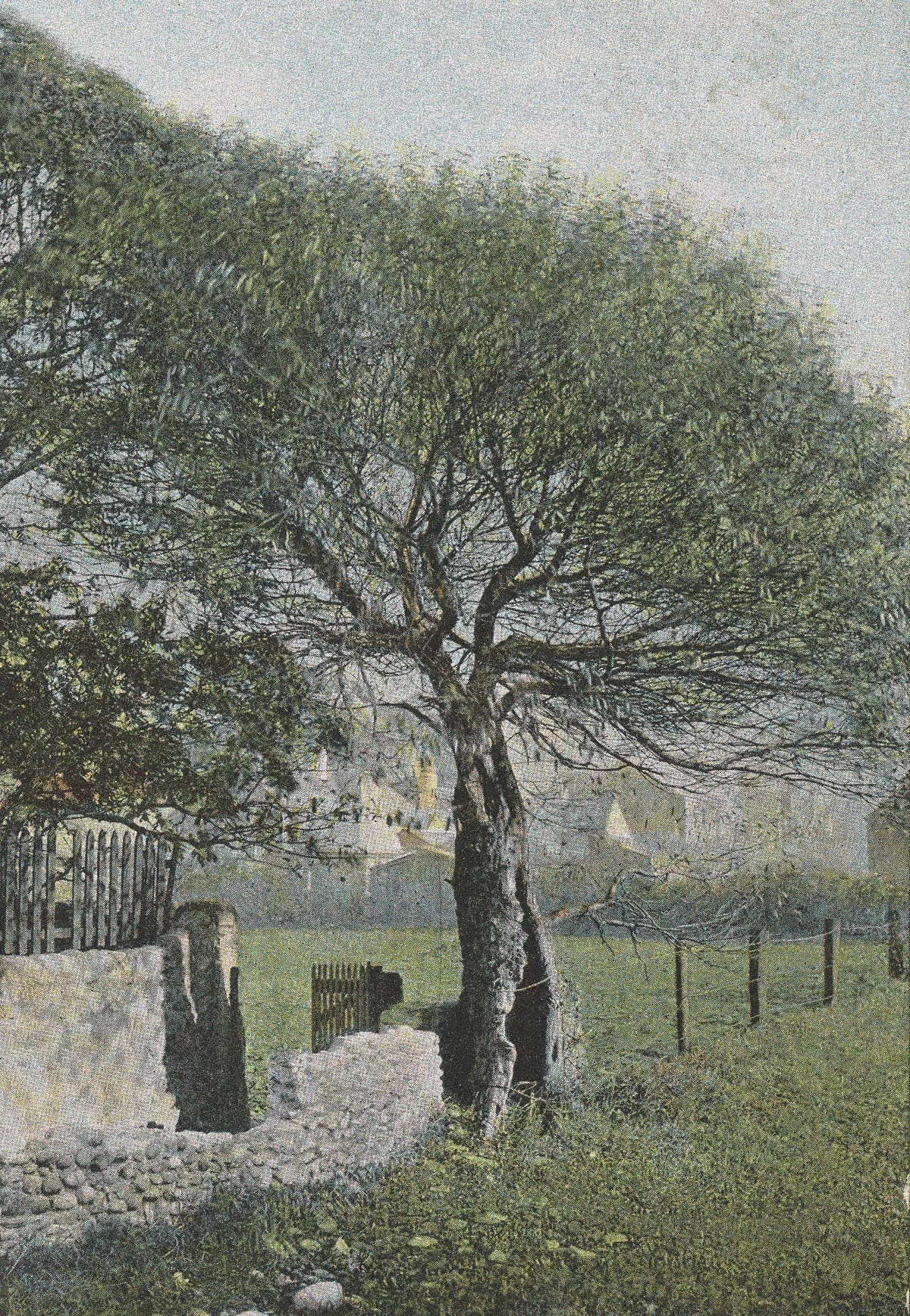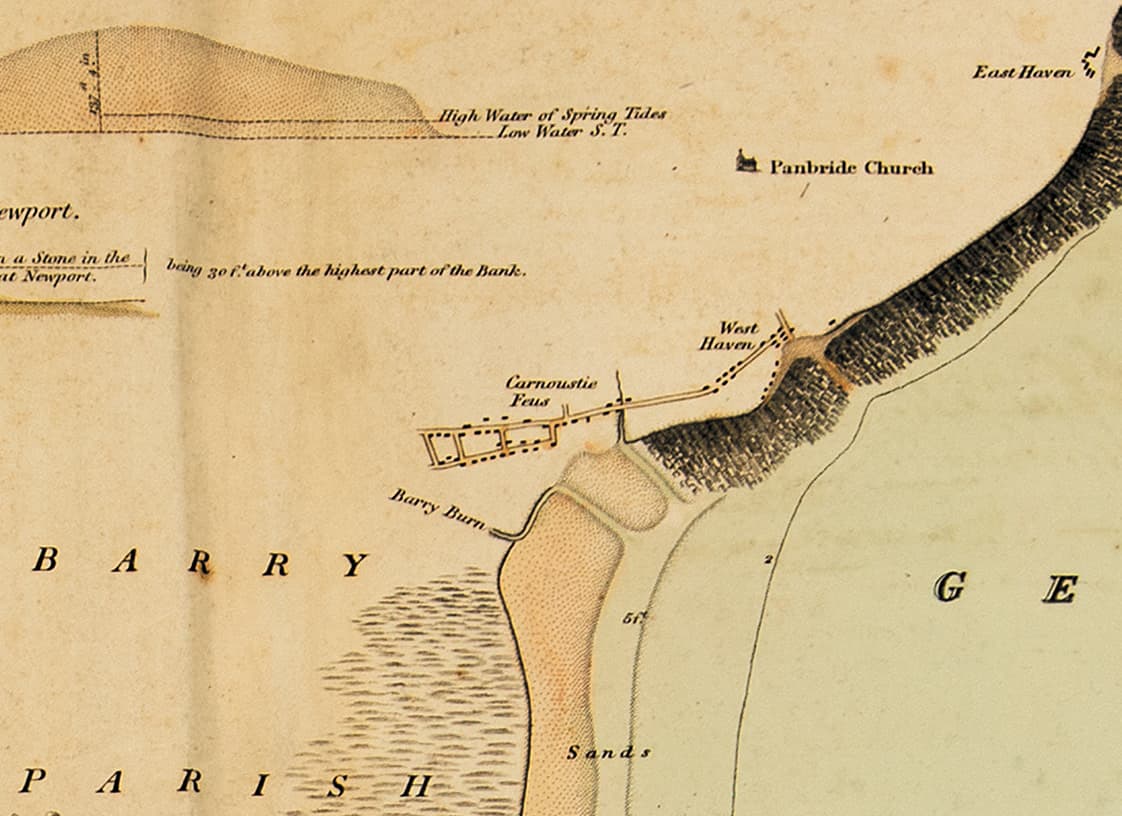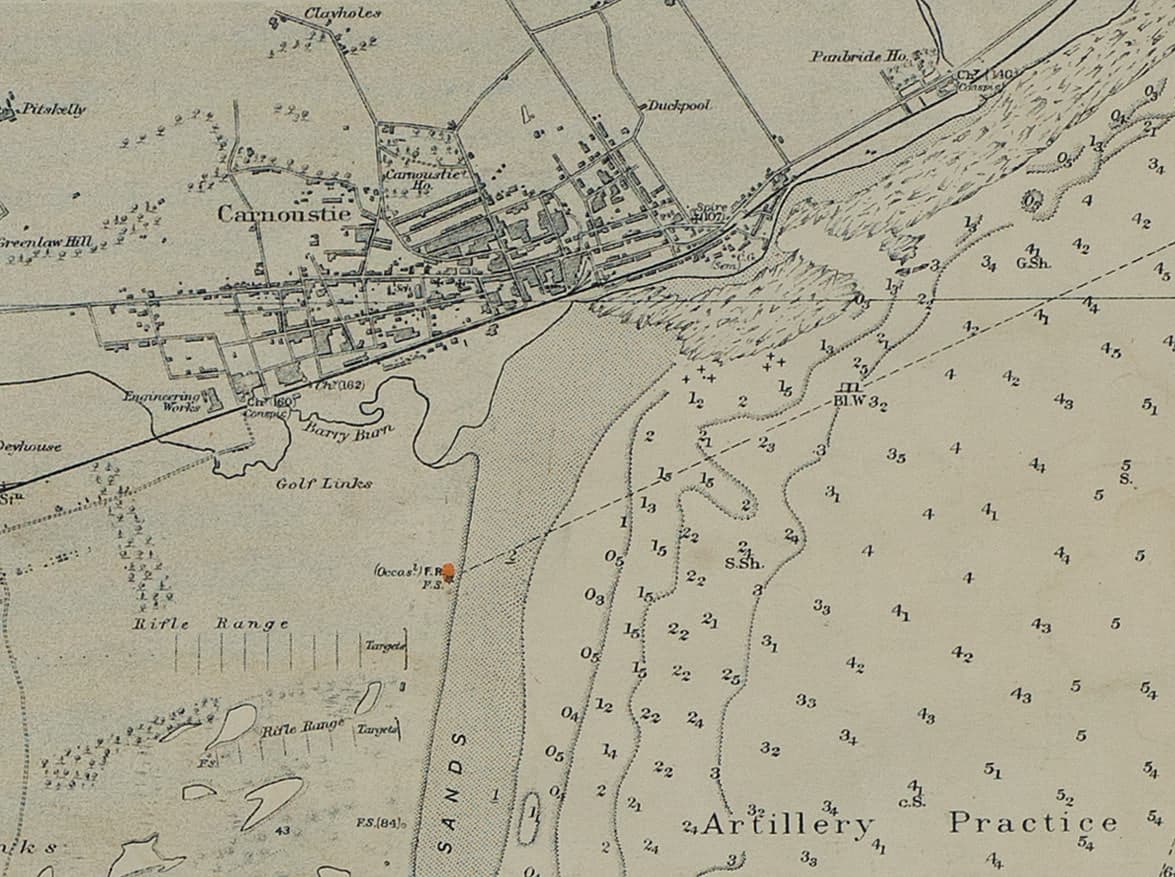


As can be seen by the map, 19 years after the first resident, the village of Carnoustie had grown, but was still very small. The local economy was largely based on agriculture and fishing. Salmon were caught in nets on the beach, and cattle were raised for export to England.
These traditional occupations were supplemented by new industries facilitated by the coming of the railway in 1838.

The second map shows Carnoustie 125 years later. There had been considerable expansion, but the town was still small. The street skeleton is recognisable today but there had been considerably more development in the 19th and 20th centuries. The town grew further in the latter half of the 20th century with greater housing density in existing streets and expansions to the west with primarily public sector housing and mainly private housing to the east.
The industrial revolution had made an impact on the town. The catalyst was the railway and soon after the existing industries were modernised and new industries located in the town. Large amounts of flax grown in the area gave rise to a handloom linen weaving industry. Its growth dominated Carnoustie’s economy through its early years.
The opening of the Panmure Works by James Smieton in 1857 modernised the linen industry, employing around 600 people at its height.
In 1874, shoemaker John Winter opened a factory at the foot of East Path (now Park Avenue/Queen Street), employing 200 people and producing 2,000 pairs of shoes and boots a week.
The smaller Taymouth Linen works were opened in 1867 to the west of Panmure Works. The business evolved into Anderson-Grice Co. Ltd.
The production of sulphuric acid – used largely in the production of agricultural fertiliser – commenced in the early 1840s at the Vitriol Works.
As personal mobility increased, the town grew more attractive to the middle classes. Commuting increased steadily throughout the 20th century. By the early 21st century it dominated the local economy with around half of employed people in Carnoustie commuting to Dundee for work.
First Feu Cottage is the site of the home of Tammas Lousen a salmon fisher, sea fencible (coastguard) and small time farmer. It is located a few metres to the west of the historic centre of Carnoustie – The Cross – at the junction of High Street, Queen Street and Park Avenue.
In 1797 he approached the owner of the land and asked to rent a small area. He was granted the first feu of 2 acres (8,100 meters squared) for seventy shillings.
The current First Feu Cottage was built around 1890 to replace the original turf cottage.